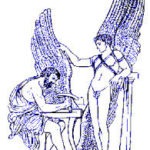We'd love to have you access this content. It's in our members-only area, but you're in luck: becoming a member is easy and it's free.
Already a Member?
Not a Member Yet?
The following is the third installment of a three-part series on Your Life as a Myth, using myths and archetypes in memoir writing. In this first post of Your Life as a Myth, I wrote about both archetypal patterns in general and about the martyr archetype. In the second post, I wrote about the orphan […]
The following is the third installment of a three-part series on the use of myths and archetypes in memoir writing. In this first post of Your Life as a Myth, I wrote about both archetypal patterns in general and about the martyr archetype. In the second post, I wrote about the orphan and the martyr. These posts are excerpted from Turning Memories Into Memoirs / A Handbook for Writing Lifestories.
In the first installment of Your life as a Myth I wrote about the martyr archetype and in the second installment, I wrote about the orphan and the prince-left-at-the-pauper’s-door. Today, I will offer you some practical suggestions for implementing the concept of archetypes in your memoir writing.
Writing from the perspective of personal myths can explain a lot about the stories you are recording. In addition, consciously living archetypes in your own life and turning them into positive forces is a rewarding path for self-growth. [Free Membership required to read more. See below. ]
This post is one of over 500 informative, well-written articles we have made available to you on this site.
We’ve contributed to your writing success; now we ask you to contribute to the expansion of the memoir conversation.
By reposting this article on your blog or website or reposting on your favorite social media, you will inform your fellow memoir writers of the programs and services—many for free like the blogs—that are available at TheMemoirNetwork.com.
Thanks for your generosity. You rock.


No comments yet.